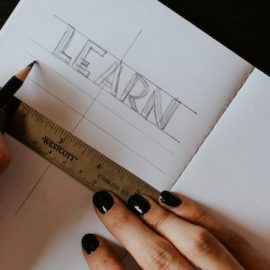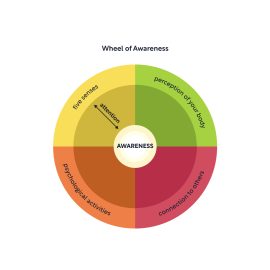

This article gives you a glimpse of what you can learn with Shortform. Shortform has the world’s best guides to 1000+ nonfiction books, plus other resources to help you accelerate your learning.
Want to learn faster and get smarter? Sign up for a free trial here .
Do you always feel rushed? What are some ways to slow down in life?
Life goes by quicker than you expect. One minute you’re catching up with friends on the phone, and the next minute your entire day has ended. But there are solutions to feeling like life is passing by too quickly.
Let’s look at how to slow down in life and why we tend to rush through it.
Why We Rush Through Life
Why do we live rushed lifestyles? In The Ruthless Elimination of Hurry, John Mark Comer says that our culture values speed, and this value compels us to rush. Our culture surrounds us with messages that it’s better to be fast than slow. We internalize these messages and arrange our lives to match the speed of the world around us.
For instance, consider the popularity of apps designed to help you maximize your efficiency and productivity at work. These apps send the message that productivity and efficiency are better than working at a relaxed pace. When you download and use them, you reinforce this value and speed up the pace of your life.
Comer identifies a belief that contributes to maintaining the pervasive culture of speed: the delusion that we can do everything we want. Comer calls this a delusion because, in reality, we don’t have enough time to do it all. For instance, you may believe you can be an effective worker, a loving family member, a talented athlete, a hilarious TikToker, and a supportive friend—but, in trying, you’ll sacrifice your sleep and health, making it impossible to meet all these goals.
Take a Breath and Slow Down
Just because our culture wants you to speed through life doesn’t mean you should. There are endless ways to slow down in life, allowing you to savor every moment so you won’t forget them.
These are the top ways to learn how to slow down in life, from reminding yourself that time is on your side to focusing on your inner body.
1. Say a Reminder: Time Is on Your Side
You live only one life, so make the most of it. Rushing through it only makes time feel like it’s going faster. So, remind yourself that you have time on your side so you can slow down and enjoy every moment.
The Secret by Rhonda Byrne reminds you that time is an illusion. Believing you don’t have enough time, whether in the future or today, creates the consequences of rushing and carelessness.
Rushing stems from fear: a fear of being late or disruptive or a fear that you’ll be considered irresponsible. When you rush, you’re focused on those fears. The universe will bring more into your life that makes you need to rush. Your thoughts center around fear of the “or else” at stake if you don’t get done what you want. You start to do things quickly instead of intentionally.
Byrne’s recommendation illustrates how her perspective on time differs significantly from John Mark Comer’s belief. She says that, when you’re rushing, simply stop and adjust your frequency. If you’re chasing time, pull yourself off that frequency by saying, “I have all the time in the world,” because you do.
Byrne encourages you to make it a habit to create every aspect of your life by intentionally setting your thoughts on what you can do. Know that you have plenty of time to accomplish your goals, and you will.
2. Disconnect From Technology
Checking your email and responding to messages may feel productive, but Indistractable by Nir Eyal says it’s a huge source of distraction in your life. You probably feel rushed to answer every email or message you receive as soon as you get them. The average employee receives 100+ emails per day—that means that, if you spend just two minutes reading and replying to each message, you’re spending nearly three and a half hours per day on email. Every time your phone dings with an alert, you lose at least a minute. Don’t let these messages steal time away from you.
The total time you spend on technology is made up of a) how much time you spend checking your inbox and b) how much time you spend responding to messages. By reducing the time you spend on these activities, you can slow down in life and reclaim hours of your day.
1) Email: Checking your email can take up hours of your day. To reduce your overall email time, you have to manage two factors:
- Time spent checking email: Reduce the number of emails you receive by unsubscribing from unimportant newsletters and services.
- Time answering email: Each time you check your inbox, reply to urgent emails, tag semi-urgent emails “Today,” and tag non-urgent emails “This week.” Set a daily timebox for processing “Today” emails and a weekly timebox for processing “This week” emails.
2) Smartphones: Your smartphone is probably one of the most distracting things in your life, and it gives you a rush every time you see a message. But, it can also be a useful tool for a variety of tasks. Maximize your phone’s use as a tool for traction so it slows down your life.
- Rearrange your apps: First, delete any apps that don’t serve you. Second, think about apps that are useful to you but distracting. You can often replace where you use these apps—for example, you might delete social media from your phone and use it exclusively on your computer. Last, rearrange your apps to remove clutter. Sort traction-supporting apps into a Goals folder and a Tools folder on your home screen, and move all other apps to the secondary screen.
- Adjust the settings: Think about which apps deserve to grab your attention in any situation. These apps—for example, your email and your messaging app—can keep their audio or visual notifications. Disable notifications for everything else.
3. Savor Your Food
When you’ve got places to be, you might eat your meal or a protein bar quickly just to get your daily intake for the day. But, In Defense of Food by Michael Pollan says that food should be savored and enjoyed. Taking your time to eat food not only helps you mentally but physically, as well.
Science suggests that it takes 20 minutes for the stomach to signal the brain when full, but Americans tend to eat meals at a faster rate. You can be finished gorging before your body has time to react. When you eat slowly, you allow the body to feel satisfied and act accordingly.
Until our culture shifts to slower rates of eating and internal cues for guidance, the following manipulations of external cues can help: serve smaller portions, use smaller plates, repackage snacks into smaller sizes, use tall glasses, make healthful foods available and visible, stick unhealthful foods in the back, and serve food from cookware in the kitchen rather than in serving dishes on the table.
The Slow Food Movement
You gain more respect for the overall health of the food chain and promote food culture when healthful food is prepared and enjoyed slowly. This belief is what the Slow Food movement was founded on. The movement was developed in Italy as a response to the hostile takeover of the fast food diet in Rome when fast food chains were introduced in the 1980s. The movement seeks to reclaim and introduce the traditional culture of eating more healthful foods consciously grown, prepared, and eaten communally.
Quality is the priority of Slow Food, for the belief is that a focus on quality will awaken an appreciation for sensory pleasures and bridge the expanding gap between eaters and food producers. The suggestion is that reestablishing an appreciation for food is the proverbial straw needed to break the back of fast-paced, individual-driven societies like ours.
Slow Food is a hard sell in America because it would require a shift in national culture along with food culture. We value success and hard work over everything else, including time off and community bonding. Fast food fits this frenzied, distracted way of life. We don’t want to slow down to think about what to eat, let alone what’s in what we’re eating, which is precisely what food manufacturers are counting on.
Take the fast-food hamburger. This hamburger is engineered with flavorings to make it more succulent. It’s made to be devoured, thereby reducing the amount of time you have to think about where it comes from. You likely wouldn’t get past the first bite if you considered the conditions of the stockyards, slaughterhouses, or thousands of workers toiling at precarious factory jobs for minimum wage.
In contrast, a grass-fed burger made at home is more enjoyable to eat. First, it’s healthier for you. Second, with the knowledge of where the beef comes from, you can imagine pastured cows grazing and skilled workers humanely producing the meat. The food feels better intellectually and tastes better, giving you a greater sense of appreciation for what you’re eating.
Appreciation for food is found when eating becomes intentional rather than habitual. Even something as simple as growing a few herbs at home can help you feel more connected to your food.
4. Focus on Your Inner Body
Being aware of your inner body—your mental and emotional state and the energy it creates within you—keeps you present so you can slow down in life. As you move through your day, don’t put all your attention on the external world around you. Keep some awareness of your inner body at all times.
Follow these steps for inner body awareness, according to The Power of Now by Eckhart Tolle.
Ask yourself, “Am I at ease at this moment?” Or, “What’s going on inside me right now?”
- Before you answer, take a moment of self-reflection.
- What kinds of thoughts are you having?
- What are you feeling?
- Is there any tension in your body?
- If you notice some unease, reflect on where that’s coming from. Are you anxious about a big project at work? Do you have some residual resentment from an argument you got into yesterday with your sister? Are you tired from a long day and annoyed that you have to help the kids with homework when all you want to do is relax? Most likely, you’re not present and are resisting the Now in some way.
If you’re having a hard time connecting with your inner body, try these methods:
- Get away from phones, people, and other distractions.
- Sit in a chair. Don’t lean back, keep your spine straight. Relax your body.
- Put your attention on your breathing. Observe the air coming in and out. Feel your lungs as they expand with air and then empty.
- Accept the world around you exactly as it is.
- Listen to the sounds around you. Don’t think about them; just acknowledge them. Observe the silence in between sounds.
- Look at the shape, color, and texture of everything around you. Again, just acknowledge these objects without interpreting anything about them.
- Close your eyes. Take a few deep breaths. With each breath, feel your stomach fill with air and then empty again.
- Put your attention on your inner body. Do you feel the life in your hands, arms, feet, legs, chest, and stomach?
- Feel the energy that flows through your body with each breath.
- If it helps, imagine that you’re surrounded by a light that fills your body with every breath. Imagine that light illuminating your entire being, vibrating with energy.
- Keep focusing on your inner body. Try to feel it without thinking about it.
- If possible, let go of the image of the light in your mind.
- Feel the presence and energy of your inner body. Let that feeling transcend the boundary of the inner and outer body and just envelope your entire being.
- Stay in this state of presence as long as you feel comfortable. When you’re ready, slowly become aware of your physical body again. Gently open your eyes and look around with a soft gaze. For a few minutes, just take in your surroundings, remaining aware of your inner body.
The more often you can connect with your inner body, the more presence you can maintain. Once you are present, you will not stay there—you will need to remind yourself and practice, and, eventually, you’ll spend more time in the present moment.
Wrapping Up
Living life in a hurry can harm your physical and mental health because of how overwhelmed you feel. Always being on the go might feel like a reasonable solution to getting things done, but it’s not a sustainable lifestyle. With the right amount of discipline, you can finally slow down in life and increase your productivity and happiness.
In what other ways have you learned how to slow down in life? Leave us your suggestions in the comments below!

Want to fast-track your learning? With Shortform, you’ll gain insights you won't find anywhere else .
Here's what you’ll get when you sign up for Shortform :
- Complicated ideas explained in simple and concise ways
- Smart analysis that connects what you’re reading to other key concepts
- Writing with zero fluff because we know how important your time is






